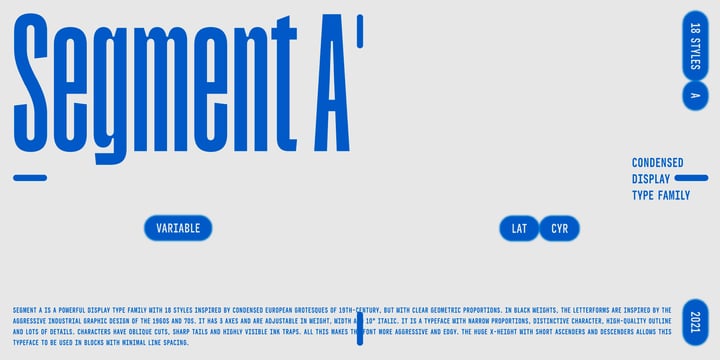 |
Segment A is a powerful display type family with 18 styles inspired by condensed European grotesques of 19th-century, but with clear geometric proportions. In Black weights, the letterforms are inspired by the aggressive industrial graphic design of the 1960s and 70s. Both have 3 axes and are adjustable in weight, width and 10˚ italic. It is a typeface with narrow proportions, distinctive character, high-quality outline and lots of details. Characters have oblique cuts, sharp tails and highly visible ink traps. All this makes the font more aggressive and edgy. The huge x-height with short ascenders and descenders allows this typeface to be used in blocks with minimal line spacing.
Features:
– Total glyph set: 631 glyphs;
– 18 styles (3 weights x 3 widths + italic);
– Support 210+ languages;
– Latin Extended;
– Cyrillic Basic + Bulgarian letters;
OpenType features:
– Proportional numerals, tabular numerals, superiors, fractions;
– Punctuations and symbols;
– Arrows;
– Stylistic alternates (ss01-ss05);
– Ligatures;
– Case-sensitive forms.